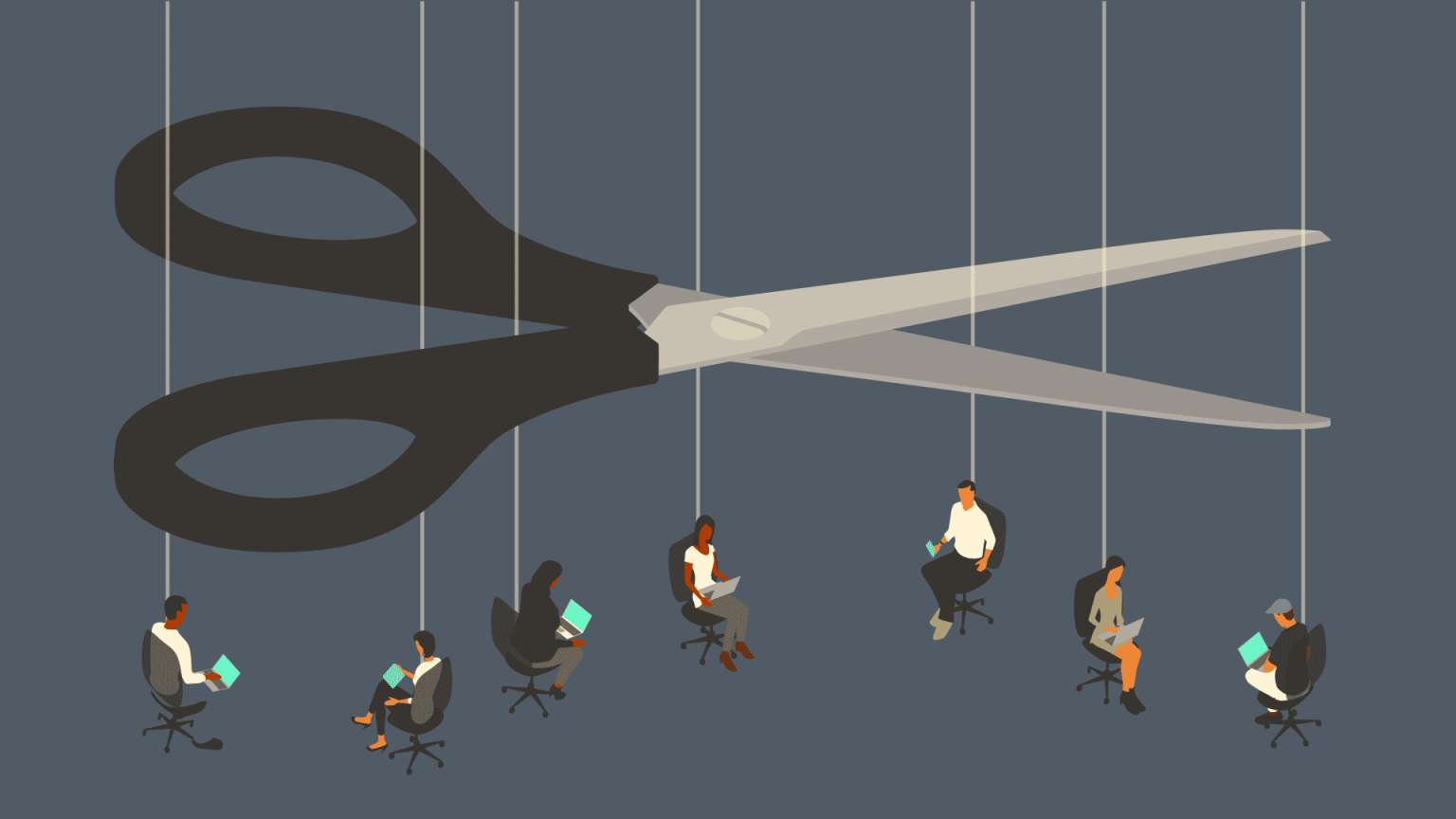Mathisworks | Digitalvision Vectors | Getty Images
In recent months, corporate America has witnessed a wave of layoffs across various sectors, causing concern among employees and stakeholders. The escalating global economic uncertainties and trade tensions have compelled many companies to reassess their workforce and implement significant cost-cutting measures. Companies from Procter & Gamble to Microsoft have announced large-scale job reductions, citing pressures to maintain profitability and adapt to emerging technologies, particularly artificial intelligence.
| Article Subheadings |
|---|
| 1) The Context of Corporate Layoffs |
| 2) Key Companies and Their Layoff Announcements |
| 3) The Role of Artificial Intelligence |
| 4) Economic Implications of the Layoffs |
| 5) Conclusion and Future Outlook |
The Context of Corporate Layoffs
Recently, the corporate landscape has been shaken by a series of mass layoffs across numerous sectors. While some companies are pursuing strategic redundancies, others cite the political and economic climate as a decisive factor. Notable figures such as the previous U.S. administration under President Donald Trump have influenced this atmosphere with tariffs and trade policies that have stirred uncertainty in the global marketplace. Although some job reports indicate better-than-expected employment numbers, underlying concerns remain, propelled by the slowdown in private sector hiring and the adaptation to new technologies.
Key Companies and Their Layoff Announcements
Several prominent companies have already precipitated significant workforce reductions as they pivot to a more cost-effective business model. For instance, Procter & Gamble has declared plans to eliminate around 7,000 jobs, which represents approximately 15% of its non-manufacturing workforce, over the next two years. These cuts are part of a broader restructuring effort that aims to streamline operations and enhance efficiency.
Similarly, Microsoft announced last month that it would reduce its workforce by about 6,000 employees, equivalent to around 3% of its total staff. These layoffs are intended to reduce management layers and improve operational effectiveness.
In the financial sector, Citigroup has indicated that it will cut approximately 3,500 positions, focusing largely on its information technology services unit. This reduction is part of a larger reorganization aimed at improving profitability.
Moreover, retail giant Walmart is expected to eliminate around 1,500 positions as it seeks to simplify its operations across various divisions. This restructuring comes as the company prepares for potential price increases due to tariffs affecting its supply chain.
The Role of Artificial Intelligence
A striking theme underpins many of these layoffs — the influence of artificial intelligence. Executives at companies like Klarna and CrowdStrike have pointed to investments in AI technology as a decisive factor in workforce decisions. For example, Klarna CEO Sebastian Siemiatkowski mentioned that the company has already reduced its global workforce by around 40%, citing investments in AI as a significant driver of this dramatic shift.
Likewise, CrowdStrike announced plans to reduce its employee count by about 500 as it navigates the evolving technological landscape, with AI touted as a major catalyst for this operational adjustment.
Economic Implications of the Layoffs
The implications of widespread layoffs extend beyond the impacted companies; they resonate throughout the broader economy. Economic analysts are cautious about the correlation between layoffs and consumer sentiment. As companies trim their workforces, disposable income tends to erode, adversely affecting consumer spending. This reduction in consumption raises concerns about a potential slowdown in economic growth as global uncertainties loom large.
Despite a recent jobs report indicating a healthier job market, the conflicting signals surrounding layoffs and hiring trends create a challenging environment for both workers and companies alike. The Federal Reserve continues to monitor these developments closely, aware of their potential impact on inflation, interest rates, and overall economic stability.
Conclusion and Future Outlook
As the corporate landscape shifts to accommodate advancements in technology and respond to economic challenges, workforce reductions are anticipated to continue, particularly in industries that are heavily embracing digital transformation. The current wave of layoffs serves as a reminder of the volatility that accompanies economic adjustments.
Looking ahead, market experts predict that companies will continue to leverage automation and AI to optimize operations, which may lead to further workforce realignments. However, as businesses strive for efficiency, the questions of employee retention and job creation versus technological advancement will remain at the forefront of discussions in corporate America.
| No. | Key Points |
|---|---|
| 1 | Many U.S. companies are implementing layoffs due to economic uncertainties and market pressures. |
| 2 | Corporate leaders cite artificial intelligence as a key factor driving workforce reductions. |
| 3 | Prominent companies like Procter & Gamble and Microsoft have announced significant layoffs. |
| 4 | Economic implications of layoffs pose risks to consumer spending and overall economic growth. |
| 5 | The trend is likely to continue as companies embrace automation and seek operational efficiency. |
Summary
The current wave of layoffs in corporate America reflects a challenging economic landscape influenced by global uncertainties and technological advancements. As companies seek to optimize their operations and adapt to changing market conditions, the impact on workers and consumer sentiment remains a critical area of concern. The integration of artificial intelligence further complicates workforce dynamics, indicating that the future of work will likely be characterized by both opportunities and challenges in an increasingly dynamic environment.
Frequently Asked Questions
Question: Why are many companies laying off employees?
Companies are laying off employees due to economic uncertainties, restructuring efforts, and the desire to cut costs. Trade tensions and the evolving landscape of artificial intelligence also play significant roles in these decisions.
Question: What role does artificial intelligence play in workforce decisions?
Artificial intelligence is driving many layoffs as companies aim to automate tasks and streamline operations. Firms are investing in technology that reduces the need for human labor, prompting significant shifts in workforce needs.
Question: How do layoffs impact the overall economy?
Layoffs can adversely affect consumer spending, leading to diminished disposable income and potential economic slowdowns. The repercussions often extend beyond the immediate job losses, influencing overall economic growth and consumer confidence.


